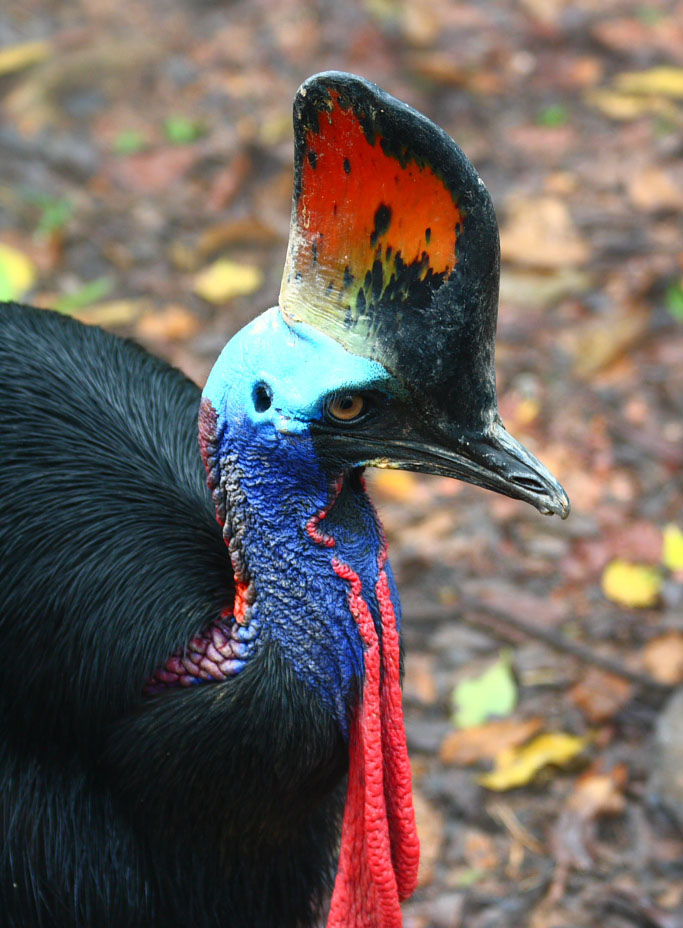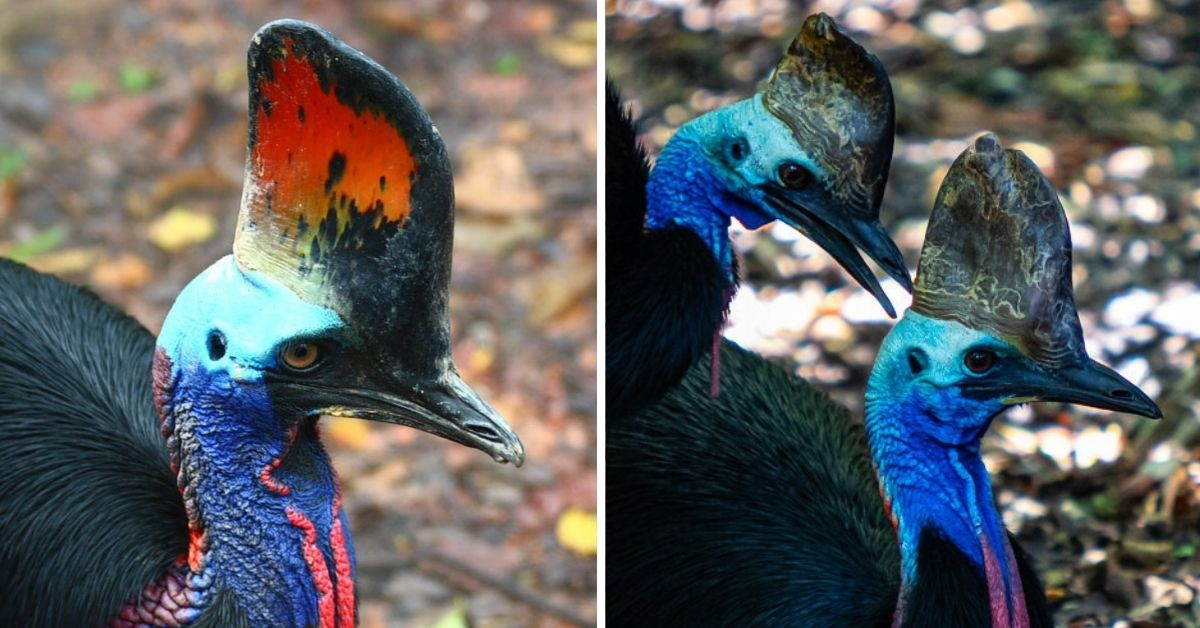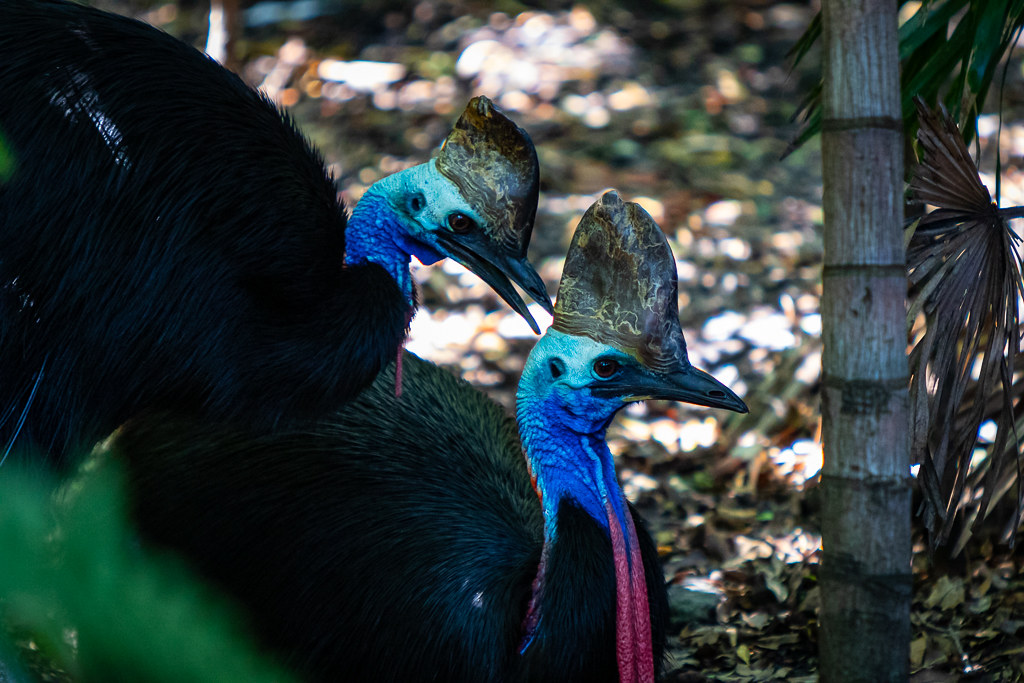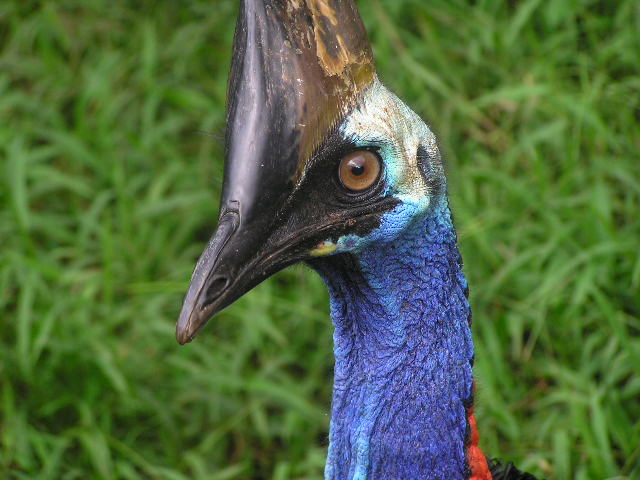The Formidable Cassowary: A Strikingly Handsome and Dangerous Avian Marvel
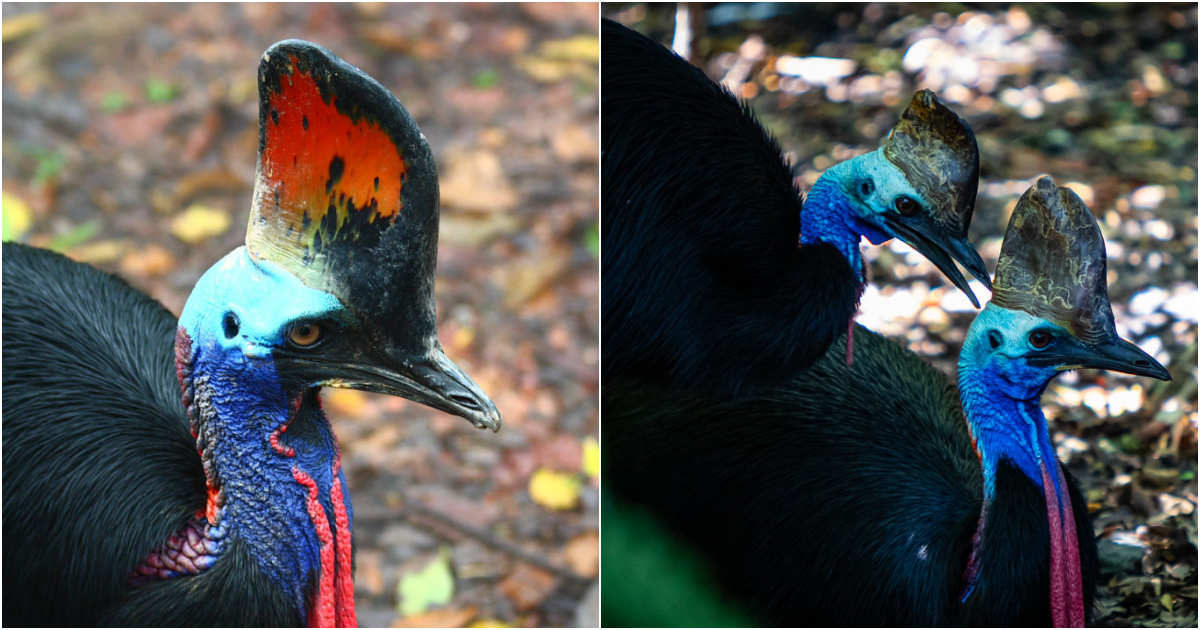
In the lush depths of the tropical rainforests of New Guinea, the northeastern part of Australia, and the Aru Islands, dwells a creature of remarkable beauty and daunting peril – the cassowary. This flightless bird, belonging to the order Casuariiformes, stands as a testament to both the wonders of evolution and the untamed dangers of the natural world.
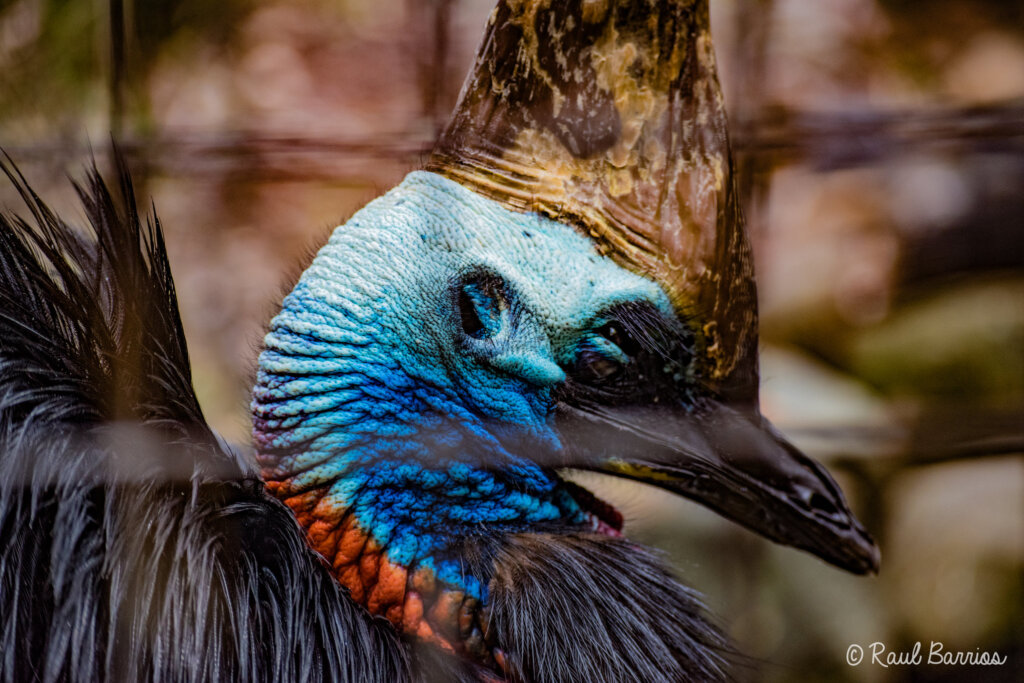
Resembling a creature plucked from prehistoric times, the cassowary is a distant cousin to the emu, ostrich, and the extinct flightless moa of New Zealand. Within its ranks, the southern cassowary reigns as the largest of the three species. The cassowary’s allure lies not only in its striking blue face adorned with vibrant red wattles but also in the ancient traits it carries, which trace back to the very dawn of avian evolution.
As a testament to its remarkable agility and strength, the cassowary can launch itself five feet into the air from a standing position. This avian marvel can also achieve speeds of up to 30 miles per hour, a remarkable feat given its imposing size. However, it is the cassowary’s formidable arsenal of sounds and physical attributes that earns it its reputation as one of the most dangerous birds on the planet.
The cassowary’s vocal range spans booms, hisses, rumbles, and roars, a cacophony that both intrigues and intimidates. Yet, the true source of its danger lies within its strong legs, each terminated by three toes tipped with razor-sharp claws. A single kick from these powerful limbs can inflict serious injuries, but it is the dagger-like claws that pose an even graver threat. Capable of reaching a gruesome length of 5 inches (12 centimeters), these claws can unleash injuries that may ultimately prove fatal.
Remarkably adapted to its lush rainforest habitat, the southern cassowary stands as the only large flightless bird specially evolved for life amidst the dense foliage. Among its distinguishing features are its three-toed feet, with the middle toe sporting an elongated, dagger-like claw. This claw serves as a testament to millions of years of evolution, enabling the cassowary to navigate the forest floor with grace and lethality.
Regrettably, the southern cassowary is an endangered species in Queensland. The decline of their population is intrinsically linked to habitat loss and fragmentation. Alarming statistics reveal that only 20-25% of the cassowary’s former habitat remains intact. Researchers Kofron and Chapman have emphasized the urgency of conservation efforts, underlining the critical need to address the primary drivers of decline and preserve the habitat that sustains this remarkable and dangerous avian marvel.
In the heart of the rainforests, where ancient lineage meets modern-day danger, the cassowary stands as a living testament to the awe-inspiring diversity and the perilous beauty of the natural world. With its striking appearance, powerful abilities, and a touch of primeval mystery, the cassowary remains a symbol of both fascination and caution for those fortunate enough to encounter it within its wild and untamed domain.

